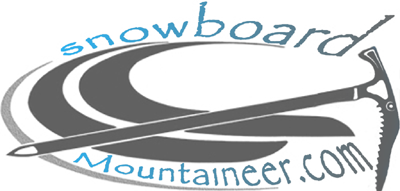Avalanche: Get the Picture
Before you go…
- Be avy aware
Get the training. An AIARE course will train you how to make decisions and manage avalanche hazards.
- Practice Rescue
Buy quality avalanche safety equipment. Know what it does for you and your partners. Practice…a lot.
- Avalanche Transceiver – to locate burial site
- Probe – to pinpoint the victim
- Shovel – to extract the victim
- Plan to Avoid Today’s Danger
Every time you go out, read today’s local
avalanche forecast. Where are the dangerous
slopes? Confirm on a map, image or with terrain
you can preview what terrain you will avoid.
Five Red Flags
 Recent avalanche activity
Recent avalanche activity
is the indisputable sign of instability. If you see recent avalanche activity the snowpack is unstable.
 Whoomping or cracks
Whoomping or cracks
Cracks in the snow surface and/or “whoomping” sounds mean that a weak layer is collapsing and that the snowpack is unstable. This is a sure sign of instability; stay on low angle slopes.
 Snow
Snow
Precipitation often increases the avalanche danger. The more snow that falls and the faster it falls the more apt it is to create dangerous conditions. And wet snow or rain falling on cold dry snow almost always causes avalanches.
 Rapid temperature rise
Rapid temperature rise
If the temperature is rising; watch out! This rapid warming can transform fluffy powder into a dangerous slab. This newly formed slab can change stable powder conditions into unstable slab conditions in a very short time.
 Wind
Wind
Wind creates dangerous slabs; if the wind is blowing or has blown recently it has probably created dangerous wind slabs and increased the avalanche danger.
